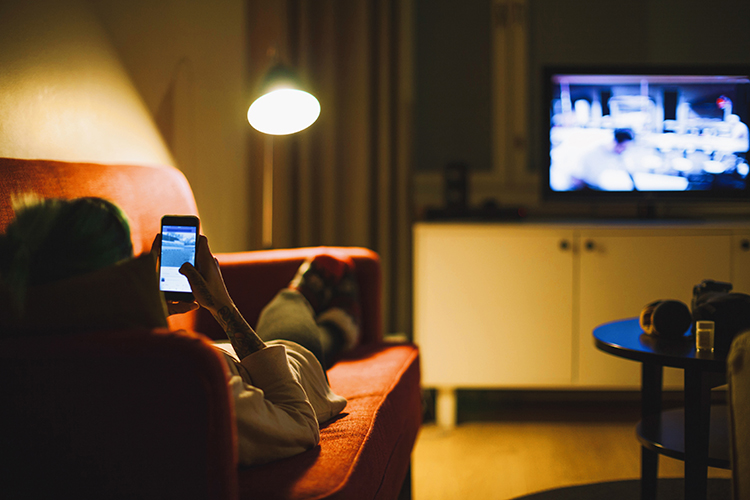
Singing the Blues: What You Need to Know About Blue Light
There’s nothing like a sunny day to brighten your spirits. Sunlight is a combination of red, orange, yellow, green, and blue electromagnetic rays that are visible to the human eye. They can affect our mood, sleep, and perhaps even our health. But it’s blue light that’s keeping researchers (and perhaps you) up at night.
We spend most of our waking hours exposed to blue light. For centuries, the sun was the most significant source of blue light. But in today’s digital world, our greatest exposure now comes from spending up to 10 to 12 hours a day staring at our digital screens—TVs, phones, computers, and tablets. In addition, blue light comes from the energy-efficient fluorescent bulbs and LED lights that brighten our homes and offices.
Exposure to blue light, in moderation, is beneficial. In fact, doctors often use it to treat seasonal affective disorder, or SAD, which is a form of depression that can happen when seasons change. Blue light can:
- Boost alertness
- Elevate moods
- Sharpen memory and understanding
- Increase our general feelings of wellbeing
But, as with most things, too much exposure has its consequences. In the same way that our brains release feel-good chemicals when exposed to certain substances, sometimes causing addictions, blue light can have the same effect. This has prompted scientists to question whether blue light from digital devices may become addictive, and make children more vulnerable to the negative effects of blue light.
Too much blue light just before bedtime can keep you awake. Although it plays an important role in controlling your body’s natural sleep cycle, known as your circadian rhythm, blue light can block your body from releasing a natural hormone called melatonin, which eases you to sleep. So, if you are having trouble sleeping, try shutting off digital devices a few hours before bedtime. This is particularly important for children, whose immature eyes can’t filter blue light as well as an adult’s eyes can.
Ophthalmologists (eye doctors) also believe that too much blue light may boost your risk of eye disease and other ailments. In fact, 65% of us suffer from “digital eyestrain”—a physical discomfort that includes blurry vision, difficulty focusing, dry eyes, headaches, and back pain caused by too much screen time. Some scientists believe blue light may even contribute to age-related macular degeneration (AMD), which can eventually lead to blindness.
What’s the best way to protect your eyes from singing the blues from all that blue light? Start by reducing screen time. If that’s not possible, try to follow the 20-20-20 rule when gazing at a digital screen to allow your eyes to relax: Every 20 minutes, look at something 20 feet away for 20 seconds.
And always remember to get an annual eye exam. It is the best way to protect your eyes and health—and can even help in the early diagnosis of diabetes, high blood pressure, and other health conditions. An eye doctor may even recommend special eyeglasses and coatings that may protect your eyes against blue light!
© 2025 Aon plc. All rights reserved.